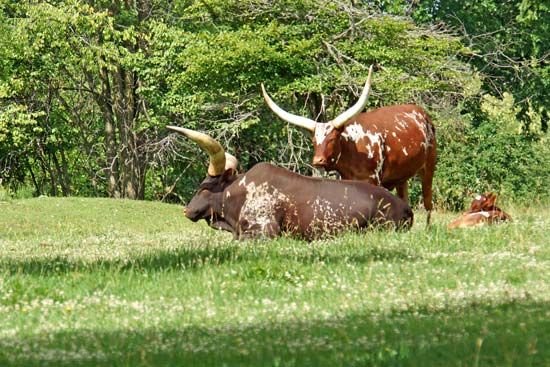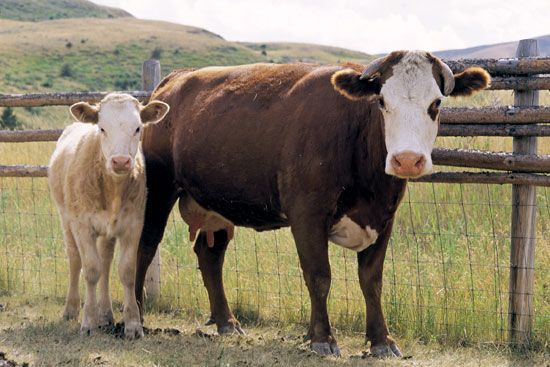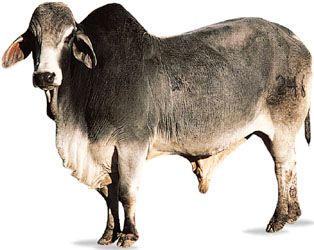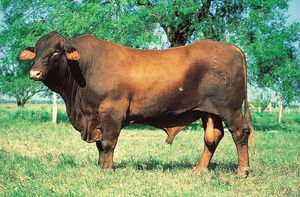cattle
Our editors will review what you’ve submitted and determine whether to revise the article.
- Key People:
- Robert Bakewell
- Robert Colling
- Charles Colling
What are cattle?
What animals are considered cattle?
What species do modern domestic cattle belong to?
cattle, domesticated bovine farm animals that are raised for their meat, milk, or hides or for draft purposes. The animals most often included under the term are the Western or European domesticated cattle as well as the Indian and African domesticated cattle. However, certain other bovids such as the Asian water buffalo, the Tibetan yak, the gayal and banteng of Southeast Asia, and the plains bison of North America have also been domesticated or semidomesticated and are sometimes considered to be cattle.
The use of cattle as commodities has been a point of philosophical contention throughout history, particularly regarding the raising of animals for food. Such issues are compounded by modern concerns about the ethics of intensive animal farming and the contribution of commercial meat production to global warming. (See also livestock farming: Cattle; vegetarianism)
Terminology

In the terminology used to describe the sex and age of cattle, the male is first a bull calf and if left intact becomes a bull; if castrated he becomes a steer and in about two or three years grows to an ox. The female is first a heifer calf, growing into a heifer and becoming a cow. Depending on the breed, mature bulls weigh 450–1,800 kg (1,000–4,000 pounds) and cows 360–1,100 kg (800–2,400 pounds). Males retained for beef production are usually castrated to make them more docile on the range or in feedlots; with males intended for use as working oxen or bullocks, castration is practiced to make them more tractable at work.
Cattle breeding
All modern domestic cattle are believed to belong to the species Bos taurus (European breeds such as Shorthorn and Jersey) or Bos indicus (Zebu breeds such as Brahman) or to be crosses of these two (such as Santa Gertrudis). Breeds as they are known today did not always exist, and many are of recent origin. The definition of a breed is difficult and inexplicit, although the term is commonly used and, in practice, well understood. It may be used generally to connote animals that have been selectively bred for a long time so as to possess distinctive identity in color, size, conformation, and function, and these or other distinguishing characteristics are perpetuated in their progeny. Breeds have been established by generations of breeders aiming at the attainment and preservation of a particular type with its identifying characteristics. This is accomplished by working on the principle of “like begets like.” It is only in relatively recent times that the science of genetics, and particularly population genetics, has contributed to breeding. (See also animal breeding.)
There are many old established breeds in continental Europe—for example, the Charolais and Normande of France, the Holstein-Friesian of the Netherlands, and many others—but British breeds are of particular interest because of their influence in building up the vast herds that supply so much beef and dairy in other countries around the world. Perhaps the finest cuts of beef come from Japanese wagyu cattle. See also beef cattle breeds and dairy cattle breeds.


































